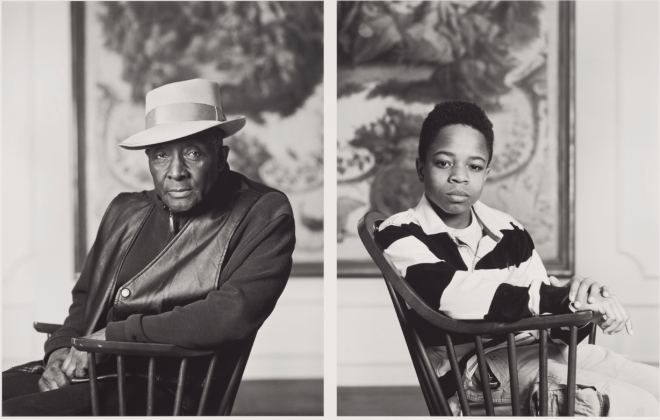
From January 27 to June 6, 2021, the New Museum will present “Grief and Grievance: Art and Mourning in America,” an exhibition originally conceived by Okwui Enwezor (1963-2019) for the New Museum, and presented with curatorial support from advisors Naomi Beckwith, Massimiliano Gioni, Glenn Ligon, and Mark Nash. “Grief and Grievance” will be an intergenerational exhibition, bringing together thirty-seven artists working in a variety of mediums who have addressed the concept of mourning, commemoration, and loss as a direct response to the national emergency of racist violence experienced by Black communities across America. The exhibition will further consider the intertwined phenomena of Black grief and a politically orchestrated white grievance, as each structures and defines contemporary American social and political life. “Grief and Grievance” will comprise works encompassing video, painting, sculpture, installation, photography, sound, and performance made in the last decade, along with several key historical works and a series of new commissions created in response to the concept of the exhibition.
In 2018, the New Museum invited Okwui Enwezor to organize “Grief and Grievance.” Around that time, Enwezor was also developing a series of public talks for the Alain LeRoy Locke Lectures at Harvard University focused on the intersection of Black mourning and white nationalism in American life as articulated in the work of contemporary Black American artists. The argument put forth in this series–which he unfortunately was unable to deliver–informed the ideas Enwezor would use as the basis for “Grief and Grievance.” Between the fall of 2018 and March 2019, Enwezor tirelessly worked on “Grief and Grievance,” drafting his thesis for the exhibition, compiling lists of artists and artworks, selecting the catalogue contributors, and speaking with many of the invited artists. In January 2019, Enwezor asked the artist Glenn Ligon to serve as an advisor to the exhibition. Given the advanced state of planning and the importance of the exhibition, following Enwezor’s death on March 15, 2019, and with the support of his estate and of many of his friends and collaborators, the New Museum established an advisory team, comprised of longtime collaborators and friends of Enwezor including Glenn Ligon; Mark Nash, Professor at the University of California in Santa Cruz, and co-curator of many of Enwezor’s projects, including The Short Century and Documenta 11; and Naomi Beckwith, the Manilow Senior Curator of the Museum of Contemporary Art in Chicago, whom Enwezor had chosen as one of the jurors of his 2015 Venice Biennale. With the assistance of Massimiliano Gioni, Edlis Neeson Artistic Director at the New Museum, this curatorial advisory group worked together to realize and interpret Enwezor’s vision for “Grief and Grievance.” The curatorial advisors and the New Museum also see this exhibition as a tribute to Enwezor’s work and legacy.
Since he began work on the project, Enwezor had expressed a desire to open the exhibition in proximity to the American presidential election, as a powerful response to a crisis in American democracy and as a clear indictment of Donald Trump’s racist politics. Although the COVID-19 pandemic has delayed the opening of the exhibition, the works included in the exhibition speak powerfully to America’s past, present, and future.
Enwezor saw “Grief and Grievance” as one of his most personal projects, and one of his most political. Within “Grief and Grievance,” mourning can be seen as a distinct form of politics, one that refuses a singular melancholy in favor of multifaceted forms of critique, resistance, and care. As Enwezor wrote in his initial narrative for the exhibition, “with the media’s normalization of white nationalism, the last two years have made clear that there is a new urgency to assess the role that artists, through works of art, have played to illuminate the searing contours of the American body politic.” In Enwezor’s view, the works in this exhibition help illustrate the idea that mourning is a practice that permeates the social, economic, and emotional realities of Black life in America as it is experienced across the country by multiple generations of individuals, families, and communities.
Comprising all three main exhibition floors of the New Museum, as well as the Lobby gallery and public spaces, the works included in the exhibition represent cross-disciplinary approaches that incorporate methods of documentary film and photography, experimental filmmaking, performance, and social engagement alongside traditional artistic mediums like painting, drawing, and sculpture. The exhibition comprises diverse examples of artists exploring American history from the civil rights movement of the 1960s to issues of police violence in the United States in the 1990s and today. These works thoughtfully reflect upon what catalogue contributor Saidiya Hartman characterizes as “the afterlife of slavery,” as many of the participating artists reflect on the intersection of historical memory and the social and political realities of the present.